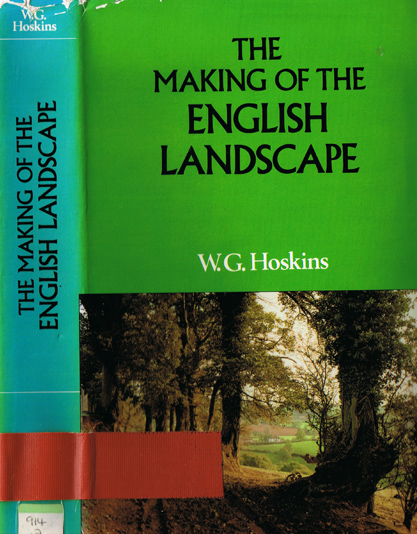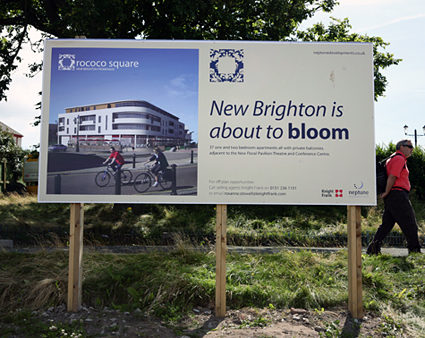TIME OUT
August 7th, 2008 adminWe’ve just had a couple of days relaxing in the Peak District where we were joined by our good friends from Brighton (and fellow photographers), Karoki Lewis and Poppy Berry.Â
Â
We’ve just had a couple of days relaxing in the Peak District where we were joined by our good friends from Brighton (and fellow photographers), Karoki Lewis and Poppy Berry.Â
Â
It’s not often that you come across a landscape, urban or rural, that is virtually unchanged in half a century.
On driving from Malham to Arncliffe, a road which cuts through the picturesque limestone landscape of the South Pennines in the Yorkshire Moors, I came across Les and Doreen Barnett sat on deck chairs looking out over the hills while enjoying a sandwich and flask of tea. Les, who is founder and president of both the Bradford Urban Wildlife Group and Bradford Botany Group, told me that he and Doreen had been coming to admire this view for nearly 50 years. In that time, all that’s changed is a new tractor on the farm and the unwelcome arrival of several roadside salt bins. Traffic is heavier at the weekends, so they only come on a weekday morning.
As W.G.Hoskins writes in his classic text The Making of the English Landscape (1955), “not much of England, even in its more withdrawn, inhuman places, has escaped being altered by man in some subtle way or other, however untouched we fancy it is at first sight.”

Three influences shape landscape- geology, climate and mankind. The origins of the early industrial revolution are to be found in the South Penines, an area which takes in parts of Bradford, Calderdale, Craven and Kirklees in Yorkshire and Burnley, Oldham, Rochdale and Lancashire County Council. These places bear witness to one of the greatest leap forward man has ever made: the Industrial Revolution. This is a cultural landscape unique in England.
While the 19th Century transformed the region – wool in Yorkshire, cotton in Lancashire, textile wealth that powered the Victorian Age and the British Empire – much of this area is still untouched. The Yorkshire Moors are steeply cut by wooded valleys and a patchwork of hamlets and fields. Acid soils on impervious gritstone rock make the moors a tough but beautiful natural environment. Below the rough grazing of the moor, a distinctive lattice of 18th century drystone walls mark out the ‘in bye’ land: winter pasture for lambing and summer moving meadows for silage and hay.
Continuing my weekly dispatch in The Times, week 10 was taken in Gordale, Yorkshire Dales.
Janet’s Foss, 28th July 2008
Holidaymakers cool down on one of the hottest days of the year in Janet’s Foss, a small waterfall near the village of Malham in the Yorkshire Dales. Foss is a Nordic word for a waterfall and Janet was believed to be the queen of the local fairies who lives behind the fall in a cave.
This week I’m going to be in Staffordshire and Derbyshire.
Â
Between 1983 and 1986, Martin Parr photographed holidaymakers and day-trippers in the decaying seaside resort of New Brighton on the Wirral (near Liverpool). Using flash and printing in vivid colour, he shed an unforgiving light on his subjects. The project was published by Dewi Lewis and exhibited at the Serpentine Gallery in 1986 as The Last Resort.
© Martin Parr, The Last Resort
At the time, there was a concerted critical media response to the work with most of the criticism being aimed at the subjects, not the photographs. Since its publication there has been much debate about Parr’s approach to his subject and opinions are very much divided between those who consider his work as cruel and voyeuristic, while others suggest his view is actually affectionate and amusing.
© Martin Parr, The Last Resort
Whatever you think, The Last Resort was a highly original and influential body of work and a wonderful satire on the state of Thatcher’s Britain. It established Parr as one of the world’s most influential and admired photographers, while revolutionising documentary photography in Britain.
© Martin Parr, The Last Resort
So it was rather surreal arriving in New Brighton on a sunny (and rather blustery) afternoon a couple of weeks ago having all the visual baggage of Martin Parr’s photographs in my head. Of course it was an anti-climax. In the name of progress the area has changed considerably since Parr’s days with much of the Wirral’s northern coastline a sought after area, (we were staying with two university friends, a GP and a trainee Consultant, who recently moved to Hoylake from Liverpool).
© Martin Parr, The Last Resort
A £70 million redevelopment plan for the regeneration of New Brighton was unveiled in 2004, with the aim of bringing jobs and tourism into the area. Known as the Neptune Project, it involved filling in the Marine Lake to build a supermarket, and constructing a lido resort combining a pool and a new marine lake. However the plans were rejected on account of financial feasibility, and scepticism over the actual worth to the community on the whole. In October 2007, the Government rejected a public enquiry into the plan, and an amended plan was approved, which will include a Morrisons supermarket on the seafront, budget hotel and refurbishment of the Floral Pavilion Theatre.

While it’s great that the area has managed to develop and shed its tatty appearance, as is so often the case these days, the re-development is very bland and non-descript. You could be on any promenade in England, there is no individuality just lots of concrete. Although I’m sure New Brightoners are much happier than the resort of Parr’s photographs.
As an aside, there’s an interview with Martin Parr in the current issue of PDN called ‘Why Photojournalism Must Get Modern’. In the interview Parr argues that photojournalism “has to get modern†to regain the attention and support of mainstream magazines. He asserts, “You have to disguise things as entertainment, but still leave a message and some poignancy.”  You can read it  online here.Â
Â
It was incredibly sad to hear about the huge fire that destroyed much of the Grand Pier at Weston-Super-Mare last week. Fortunately no-one was injured in the fire, which firefighters said started in an area containing deep fat fryers.Â
As with many seaside towns, the pier is an icon of Weston’s seafront and a focal point for most tourists visiting the town.
According to Visit Somerset, part of the pier has already re-opened to visitors. As well as enjoying the attractions at the landward end of the pier, visitors can also walk along most of the length of the pier deck and see for themselves the effects of the fire on the pavilion building. Â
And it seems that this won’t be the end of the pier show. Owners Kerry and Michelle Michael, claim in an interview featured in yesterday’s Weston Mercury that they will restore the pier to its former glory.
Â
We’re leaving Hebden Bridge in Yorkshire and heading to Birmingham for the next couple of days. Tomorrow I will be a panelist on the Rhubarb-Rhubarb seminar ‘The Value of the Image’. If you’re going, please be sure to say hi afterwards.
Here are the details-
RHUBARB-RHUBARB PRESENTS THE VISIONARY ‘TALKIN’ BUSINESS’ SEMINAR
with
Alison Nordstrom – Curator of Photographs at George Eastman House International Museum of Photography and Film in Rochester, New York
Stephen Mayes – International Image Forecaster, New York
Simon Roberts – Award Winning Photographer, Brighton
Conceptualised and chaired by Rhonda Wilson – Creative Director, Rhubarb-Rhubarb
Three remarkable people with a wealth of experience in the fields of Fine Art/Documentary/and Commercial/Stock photography discuss The Value of the Image at a time where technologies and economics are inextricably bound up in the futures of emerging and mid career photographers, and the ability of those already ‘up there ‘ to remain so.Â
Far from simply being a question of producing ‘good’ images, the demands on photographers – to be smart in business and savvy in protecting themselves and their images from real time and virtual exploitation, keeping their agents happy, selling work and finding the resources to finance new projects – are the harsh realities for anyone wishing to stay alive in the increasingly complex ladder of opportunity within the image sector.
In this fascinating seminar, Simon Roberts gives a contemporary account of the skills involved in becoming and remaining an international photographer of repute; Alison Nordström will discuss the acquiring and caring for work in perpetuity – how working with museum collections is fundamentally different from working with sales galleries, temporary exhibitions or alternative spaces and Stephen Mayes will be predicting the future with the demise of copyright and the rise in the value of the web for selling ideas.
Thursday 31st July 2008 at 1pm
Lecture Theatre, Aston Business School, Aston University, Aston Triangle, Birmingham B4 7ET
£30 , £25 concessions and Rhubarb Review attendants– booking essential –
please email info@rhubarb-rhubarb.net to reserve a place
Â
This was a question posed by Dr John Sentamu in a speech he made before his enthronement as Archbishop of York in November 2005. He answered-
“It is a very serious question. The English are somehow embarrassed about some of the good things they have done. Multiculturalism has seemed to imply, wrongly for me, ‘Let other cultures be allowed to express themselves but do not let the majority culture at all tell us its glories, its struggles, its joys, its pains’. A failure to rediscover English culture would fuel greater political extremism.”
You can read the full speech here.
Â
Continuing my weekly dispatch in The Times, week 9 was taken in New Brighton, Merseyside.
New Brighton, 21st July 2008
Spectators gather on New Brighton beach as the last of the Tall Ships sail out of Liverpool on the River Mersey. Over 60 sailing ships were moored in the city’s docks for the start of the annual Tall Ships Race, creating scenes reminiscent of Liverpool’s historic past.
Â
I enjoyed this cartoon in today’s Times by Morland showing an embattled Prime Minister, Gordon Brown holidaying in Southwold, Suffolk.
Â
Jemima and I take a Monday-morning dip in Malham Tarn, Yorkshire Dales.
Â